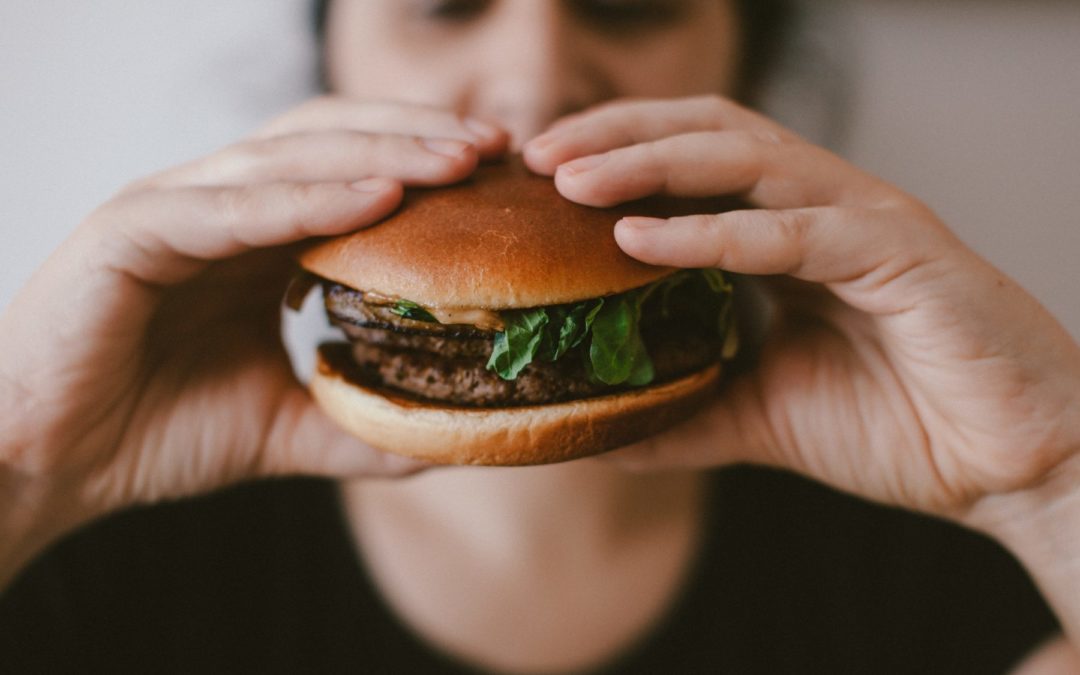Lately, mindful eating has felt like “hurry up and get his over” kind of eating during my quarantine with three boys. The stay at home way of living has changed the way families eat. Some of this is for the good, such as more opportunity for family mealtime! But, like our recent post on “stress-eating,” their are added challenges by being at home all day, every day with the ones we love in our ability to practice of mindful eating.
What Is Mindful Eating?
Mindfulness is being present to the moments of your life without judgment. In the practice of mindful eating, we’re being fully present with ourselves and food without judgment. This includes the entire experience of eating the actual food, such as taste, texture, and. temperature. And, it also includes noticing our mood, emotions, levels of hunger/fullness and our internal dialogue of the food.
How Does Mindful Eating Help?
Related to behavior change, mindfulness allows us to press the pause button between a thought and a behavior, eliminating compulsiveness. This can be especially helpful in changing unwanted food behaviors. When we’re aware, the mind is more at ease and we’re less likely to be agitated or to eat in an emotional way. This increased clarity also allows us to better see our patterns of eating, and frees us to make better choices. Mindfulness also focuses on being compassionate toward ourselves, so during times of stress/emotional eating – we are less self-judgmental.
Getting Started With Mindful Eating
There are countless benefits to incorporating mindful eating into your day including better nutrient absorption (better digestion = less GI distress), decreased negative emotions, better management of chronic diseases, and an improved relationship with food. The practice of mindful eating is often used as part of treatment for binge eating disorder (BED) and for those who have difficulty with emotional eating or managing their weight.
What I find with working with clients (and in my personal experience) it’s difficult to be consistent. Given our fast-paced world, it’s the norm (for me at least) to sit down with a Tupperware of leftovers hovering over the computer, then asking yourself an hour later “what did I even eat for lunch?” Mindful eating requires intention, such as other mindful practices like meditation. But, unlike meditation, we have to eat! So, why not mealtime as mindfulness self-care.
Specific Strategies to Try
Start slowly
Something I like to do with my clients is have them pick just one meal or snack that they’ll commit to eating mindfully. Maybe this is breakfast that you’re able to enjoy before getting the busy day started. This gradually implements mindful eating, but in a way that feels manageable, which is what matters most when making long-term habits.
Incorporate satisfaction
Try to cook foods that you want to take the time to savor, making the experience more motivating. It’s difficult to want to mindfully eat when you’re not thrilled about what you’re having in the first place. Check out our free Friday recipe newsletter.
Take your time
Set a timer to see how long it actually takes for you to eat. Most of us DO have a bit more time to eat; even if kids are swarming around us.
Limit distractions
Notice how I didn’t say eliminate distractions. As reasonably as possible, try to limit phone, TV, stressful conversations, etc. Do you have to lock yourself in the laundry room and light a candle for it to be counted as mindful eating? No.
Art of noticing
How many flavors can you identify as you eat? What’s the temperature of the food? How much of it do you think will be enough to satisfy you? What component of the meal do you find most enjoyable? For many of you, homeschooling kids right, now asking your kiddos these questions can be a wonderful way to incorporate mindful eating into their lives!
Fuel throughout the day
If there’s a single thing that will dismantle the intention to eat mindfully, it’s not eating enough or going too long between meals. Our biology takes over and makes sure we just EAT NOW and is typically combined with a faster pace.
Take inventory
Tune in to your body and mind before eating. How would you rate your hunger on a scale 1-10? Are you craving anything? What amount of food would satisfy the hunger? Learn what your hunger signals are; they’re different for everyone. Work to make eating an intentional act instead of an automatic one. By increasing your recognition of physical hunger and fullness cues, you are able to distinguish between emotional and true, physical hunger.
Strategize
If you’re a parent, you might consider eating one meal of your day before getting your kids’ plates ready. This can help prevent getting overly hungry, which as we know, will decrease the chances that you’ll mindfully eat your next meal. It’s helpful to remember that kids are always watching and learning from parents’ actions. If you model a mindful and healthy relationship with food, they’ll take note.
Incorporate mindfulness elsewhere in your day
Once you start doing one thing mindfully, it flows into other areas of your life. An overall mindfulness practice will sharpen your mindful eating skills. I really like the apps insight timer and Headspace, which actually has a mindful eating track.
And as always, be patient and have compassion for yourself. Especially during these high stress times. It won’t be perfect and it doesn’t have to be. One of the core principles of mindful eating is non-judgment! It’s about learning how you interact with food and creating as much joy as possible.

